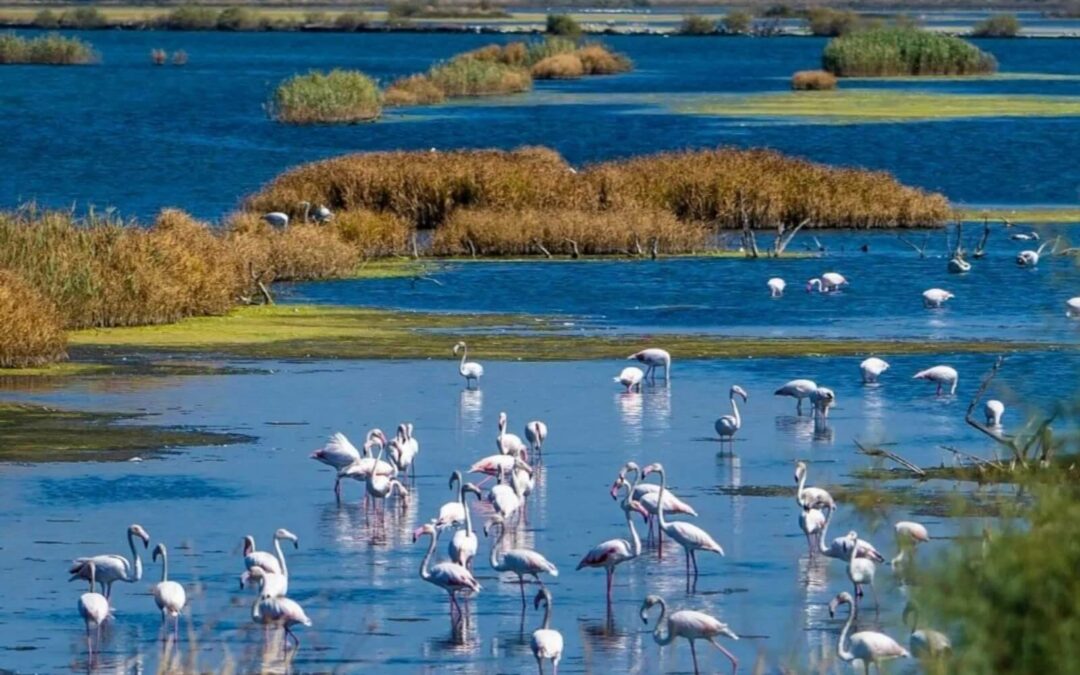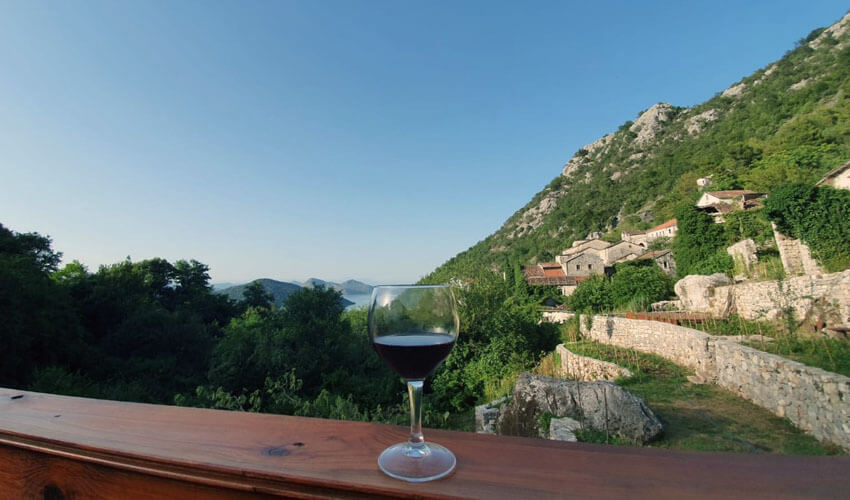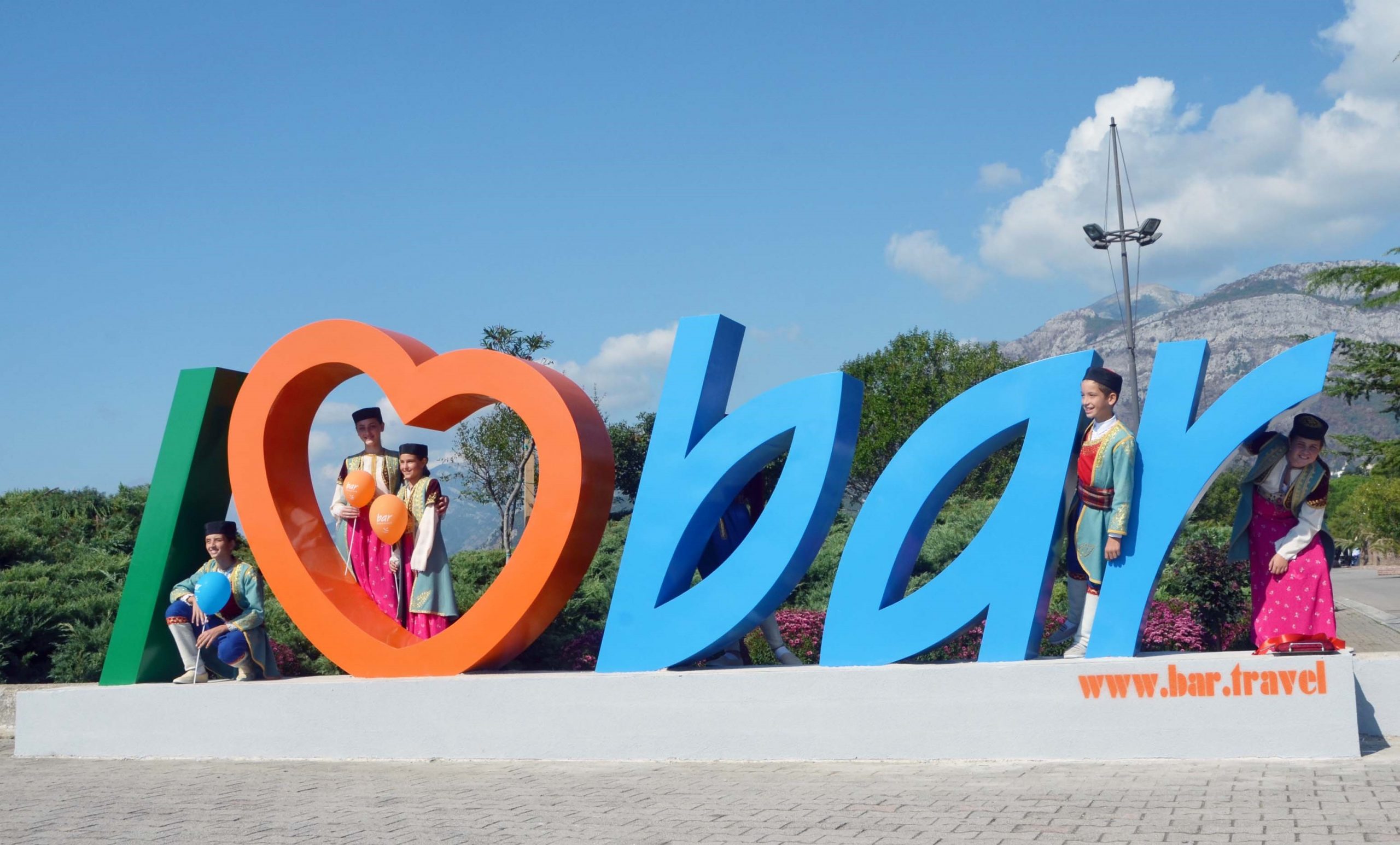Ulcinj Salina is one of the most attractive bird habitats, and is located on the famous Adriatic corridor for the migration of migratory. Since its inception in the 1930s, the fate of Salina has been tied to birds.
In the past, in the area of today’s Salina, there was Zogajsko blato (“zog” in Albanian means “bird”), a swamp with the salt water of lower salinity than sea water, formed by mixing the sea with running water or rainwater.
The swamp had been inhabited before the sea salt was formed by combining sea, sun, and wind. Biodiversity is important for Salina birds: both for migratory and for those whose salt lake is a habitat throughout the year.
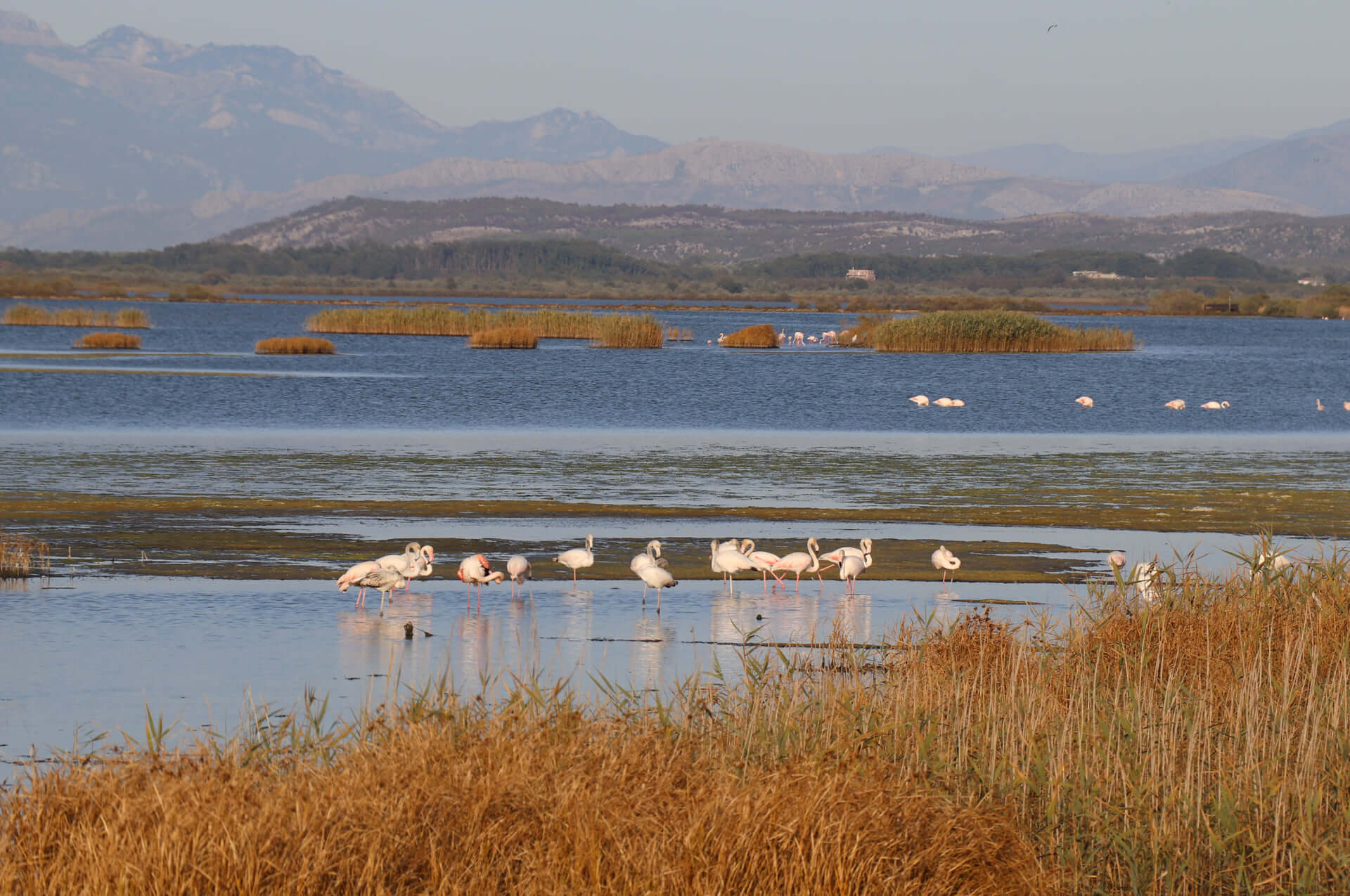
Ulcinj Salina has been associated with birds since its inception Photo: Selver Vuković
Early autumn and spring are the time of migration of many birds.
Millions of birds from Africa across the Mediterranean Sea on their way to Europe come to Ulcinj’s Solana. The flight across the Adriatic between Ulcinj and the Italian coast is about 200 kilometers long. Flying over the sea, birds do not have the opportunity to stop. How do they gather strength and renew energy for demanding migrations?
The answers to these and many other questions lie within 5 km from the urban center of Ulcinj, where the bird kingdom lives. Visitors to the Salina in this Nature Park have the opportunity to test themselves as far as they know the world of birds, to observe them, to monitor their behavior using optical aids.
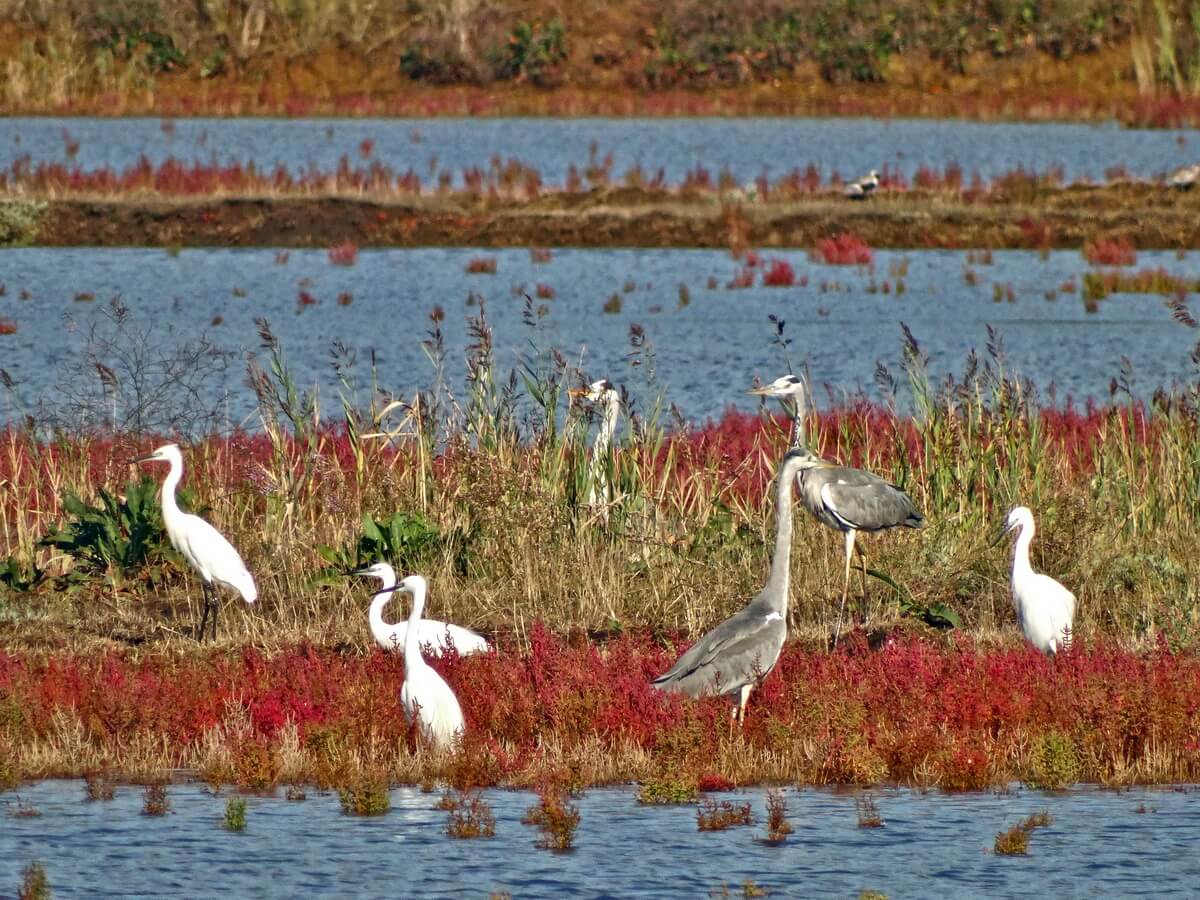
Ulcinj Solina is on the RAMSAR list as an internationally important wetland Photo: CZIP
It is an interesting fact – over 350 species of birds have been registered in Montenegro, of which about 250 have found habitat in Salina, which occupies an area of 1,492 ha.
About 500 species of birds are recorded on the territory of Europe, which means that half of the bird world lives right on the site of the Ulcinj Salina. Only this fact is enough reason to visit Ulcinj’s Salina.
The best conditions for bird watching are during migration, from March to June and from the second half of August to November. No matter how many times you visit Salina, you will encounter certain species for the first time. Each return to Salina is a new experience.
For many visitors to the Nature Park in Ulcinj, the most beautiful experience is watching flamingos – birds that are a symbol of the Ulcinj Salina.
Why do flamingos have pink feathers?
The only nesting place of flamingos on the east coast of the Adriatic is Salina in Ulcinj, where these birds stay all year round.
The Center for the Protection of Birds conducts monthly supervision. According to their data, there are up to 2,500 flamingos in Salina. These charismatic birds live in flocks. Salt lakes are a favorite habitat of flamingos.

Flamingos stay in Ulcinj’s Salina for all 12 months Photo: CZIP
In nature, nothing is accidental – Flamingos are rare birds that feed their young with milk.
Bird’s milk is a symbol of luxury, wealth. Flamingos really stand out in the bird world with their magnificent appearance. This is the first impression when you observe flamingo colonies through binoculars or telescopes.
Unusual birds with long legs, thin necks, have feathers ranging from the lightest to pink shades. Their feathers take on a pink color because they also feed on a type of shrimp, and this diet is rich in beta carotene. It is interesting that males have more expressive feather colors, even shades of red.
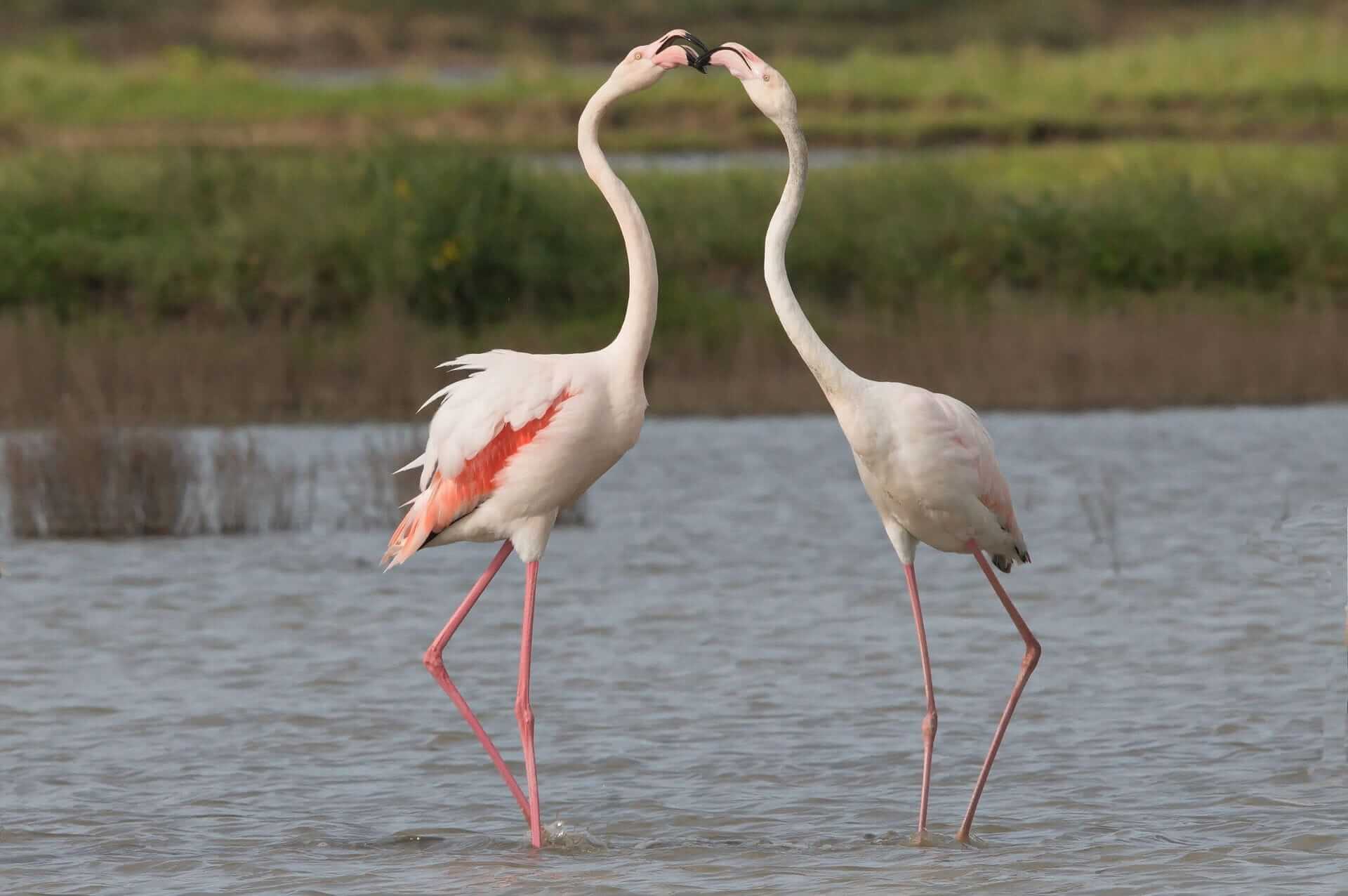
They got their name from the unusual color of their feathers, and flamingos in Spanish means fire
Flamingos can grow up to 145 centimeters, which is the height of a child of seven to eight years. Their wingspan is 140 to 170 centimeters.
When the flamingos spread their wings, the splendor of the gift of nature can be seen. That nature has an unmistakable style of color matching is confirmed by the thin legs of the flamingos, which are completely pink, as is the dominant beak, and its top is black.

The wingspan of flamingos is 140 to 170 centimeters Photo: Portal Ul – info
The interesting fact about flamingos is that they almost always stand on one leg.
Some scientists claim that this way they conserve body heat because with one foot in the water they lose much less body heat. Interestingly, these birds do not have to use muscles at all to stand on one limb.
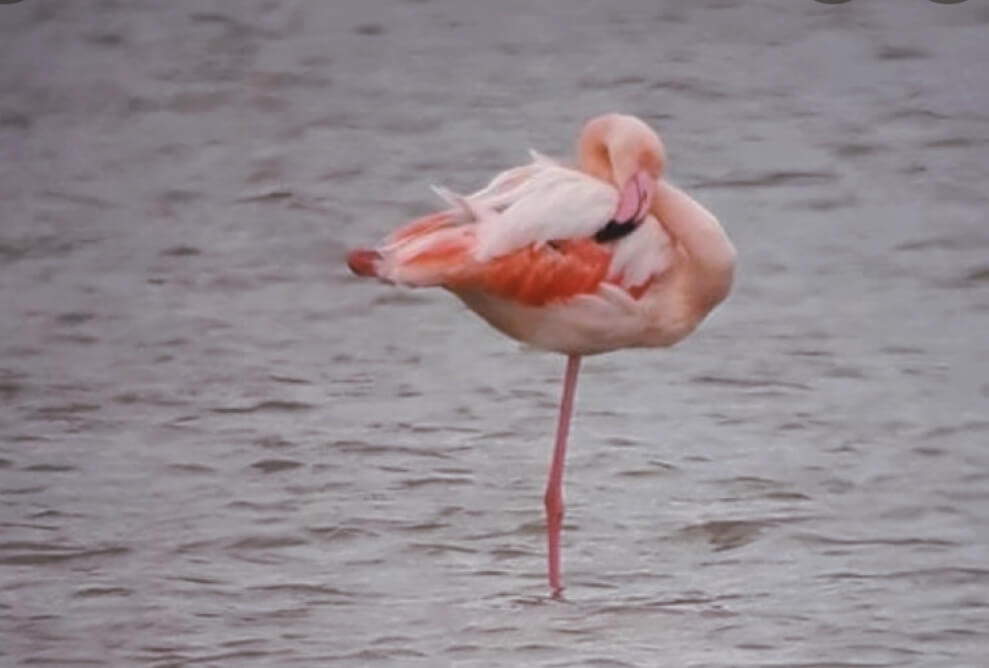
Flamingos are also characterized by the fact that they almost always stand on one leg
You will hear this and many other interesting facts about flamingos during the “Flamingos tour in Ulcinj’s Salina”.
You will also learn how flamingos live in pairs, attracting females, who use the skill to grab food with the upper key…. Don’t wait, International Flamingos Day, June 23 to watch them in Ulcinj’s Salina because you can enjoy an unusual experience all year round when the days are clear.
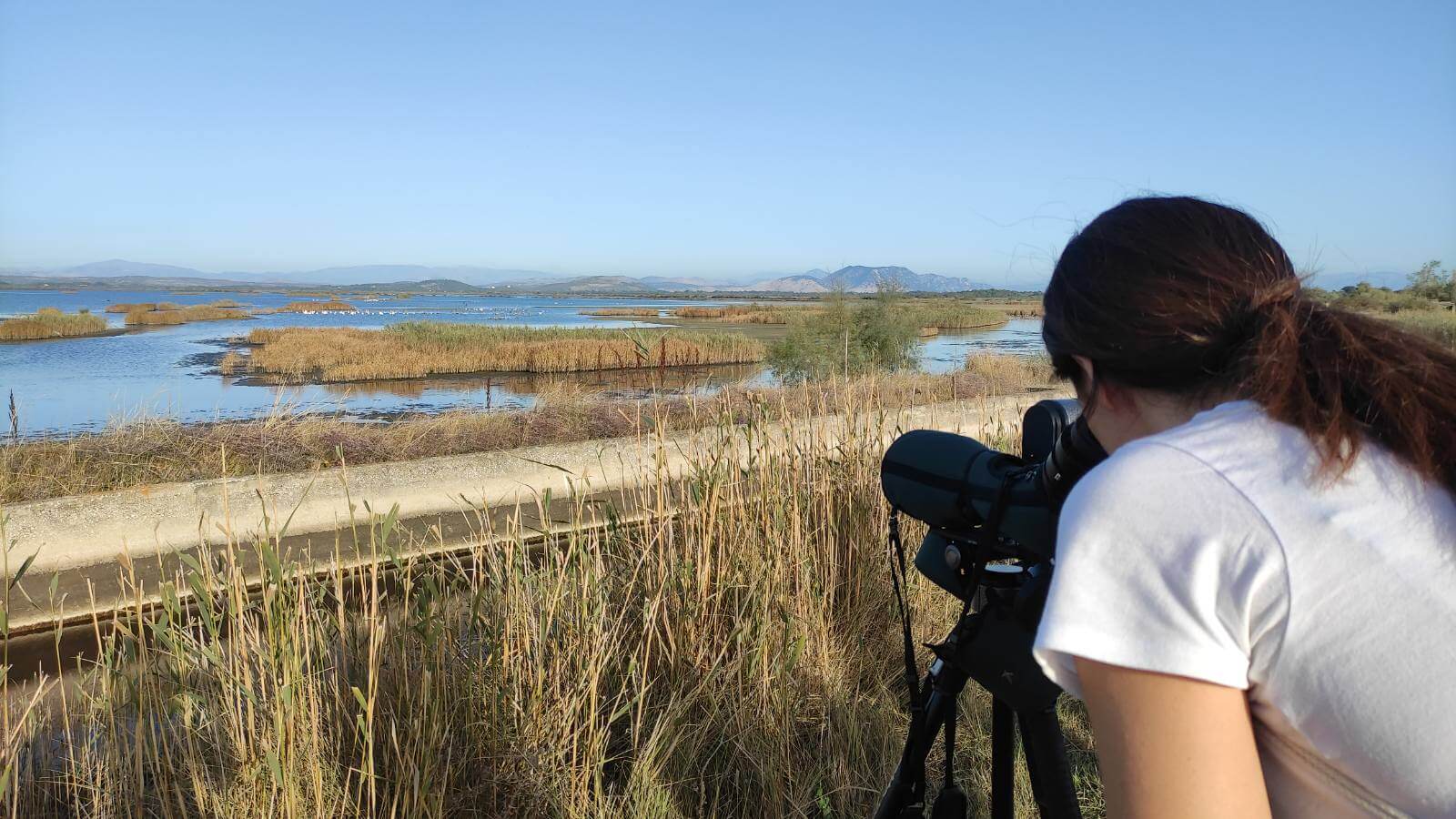
All 12 months the birds can be observed in Ulcinj’s Salina Photo: CZIP
The call of the wild on the “doorstep”
In 2013, Ulcinj Salina lost its original purpose. A neglected building, dilapidated warehouses, dry pools are a sad picture of this area, but Salina was and remains special because of the bird habitat.
Barely anywhere in the world can you find an area with so many different bird colonies.
In addition to magnificent flamingos, the visitors are captivated by elegant pelicans as well, which usually show off in pairs or in small flocks. Their feathers are white with grayish hues. Pelicans are recognizable by their long necks and beaks. They can usually be seen in Salina from August to December.

Elegant pelicans are recognizable by their long neck and beak Photo: CZIP
The bird kingdom is wonderful.
Can you imagine a bird whose length is less than 20 centimeters, wingspan about 45 cm, weight up to 35 grams, and which can fly for 10 months without landing?
These are migratory birds, common swifts (Apus apus), which always come to Ulcinj around March 20th. Their arrival marks the beginning of spring.
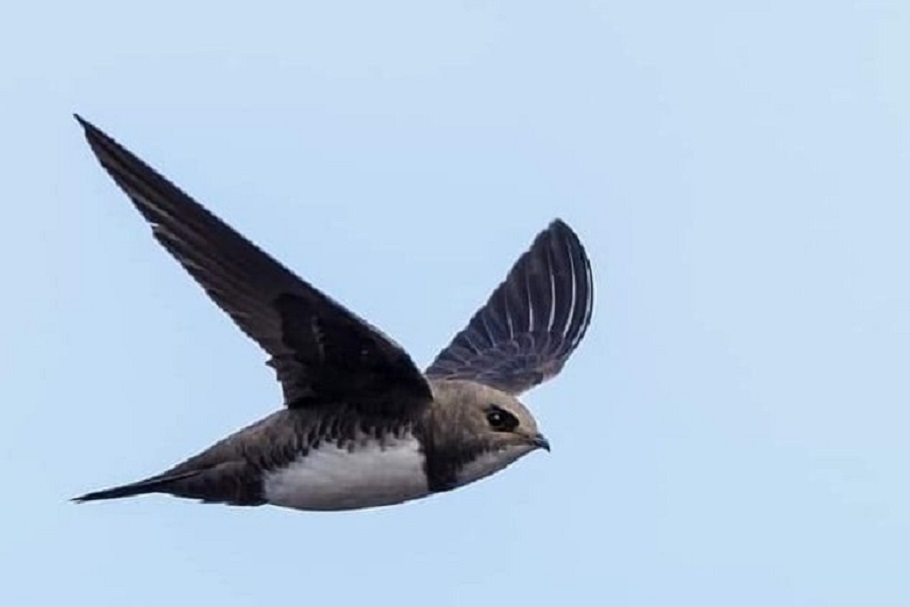
The arrival of the alpine swifts in Solana marks the beginning of spring Photo: Portal Ul – info
Ornithologists believe that swifts have the ability to feed and sleep in the air. They explain that – while one half of the brain of these birds is active, the other is asleep.
The black swift is one of the symbols of the city of Dubrovnik. It was named Bird of the Year in 2003 by the German Nature Conservation Association (Naturschutzbund Deutschland, NABU) in Bonn.
Spectators enjoy seeing different species of ducks, herons, jays, vivas, gulls … just as much. The only dilemma they can have is whether the spectrum of colors is more beautiful or chirping of birds

Yellow wagtail (Motacilla Flava) Photo: Bojan Zeković, CZIP
Spectators need to be careful not to endanger the birds.
Bird’s behavior is a reflection of how they are being treated. When they are very sensitive, they run away far from people. That means they are scared and that something negative is happening – hunting, habitat destruction …
The European Birdwatching weekend organized by “Birdlife International” with ornithological organizations of European countries is traditionally held on the first weekend of October. The goal of the event is to popularize bird watching and research, education, and raising public awareness of the need to protect birds and their habitats.
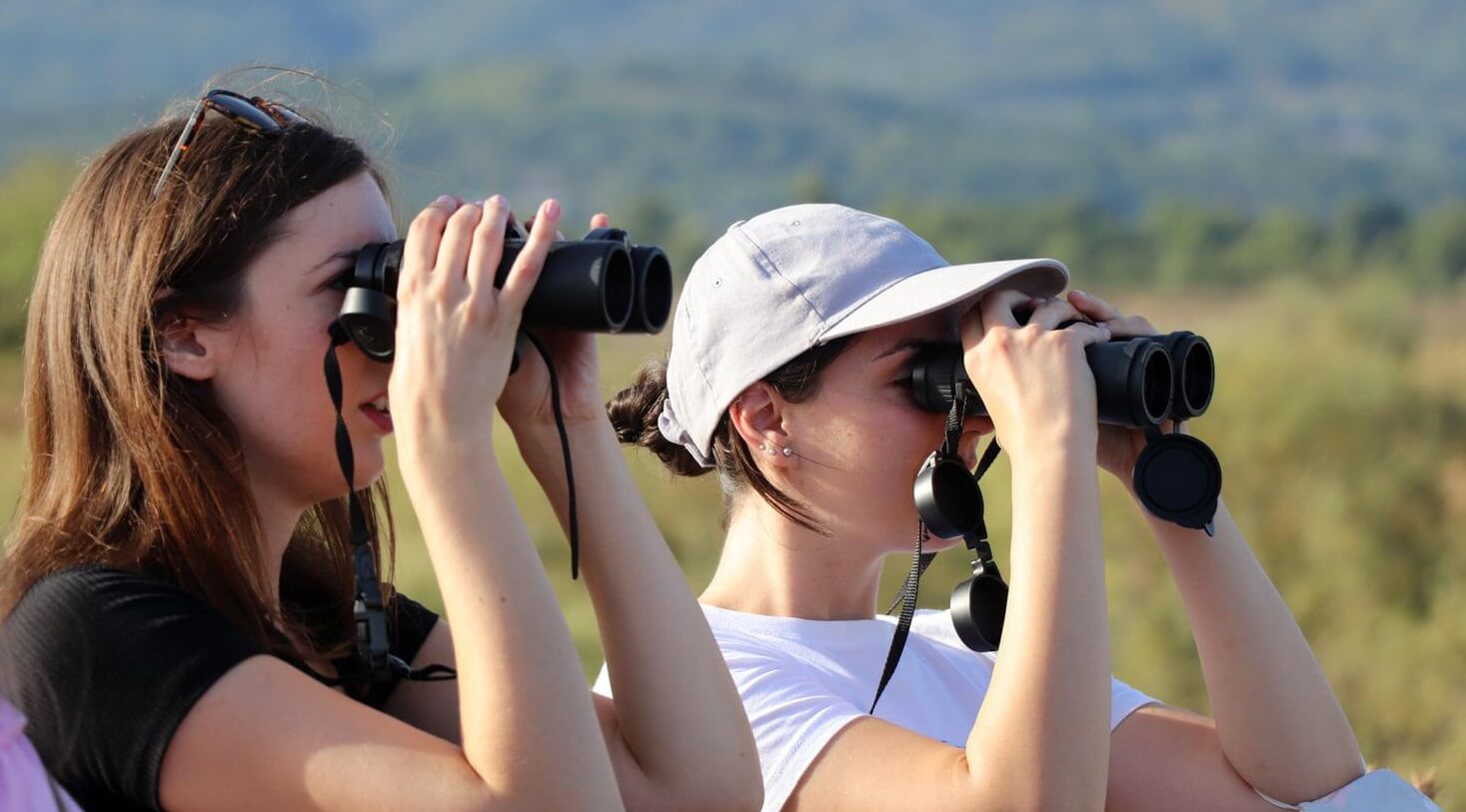
Ornithologists say bird watching in the UK is a “national sport” Photo: Selver Vuković
The number of bird watchers is constantly increasing.
It is estimated that there are over six million bird-watching enthusiasts in EU countries and as many as 50 million people in the United States. In Great Britain, the Royal Society for the Protection of Birds was formed in 1889, the first of its kind, and today there are three million of those who study birds. Ornithologists say that bird watching in Great Britain is a “national sport”.
Some cover 2,000 kilometers, some 20,000 kilometers, and for the inhabitants of Montenegro, Salina is the habitat of 250 species of birds, so to speak, on the doorstep.
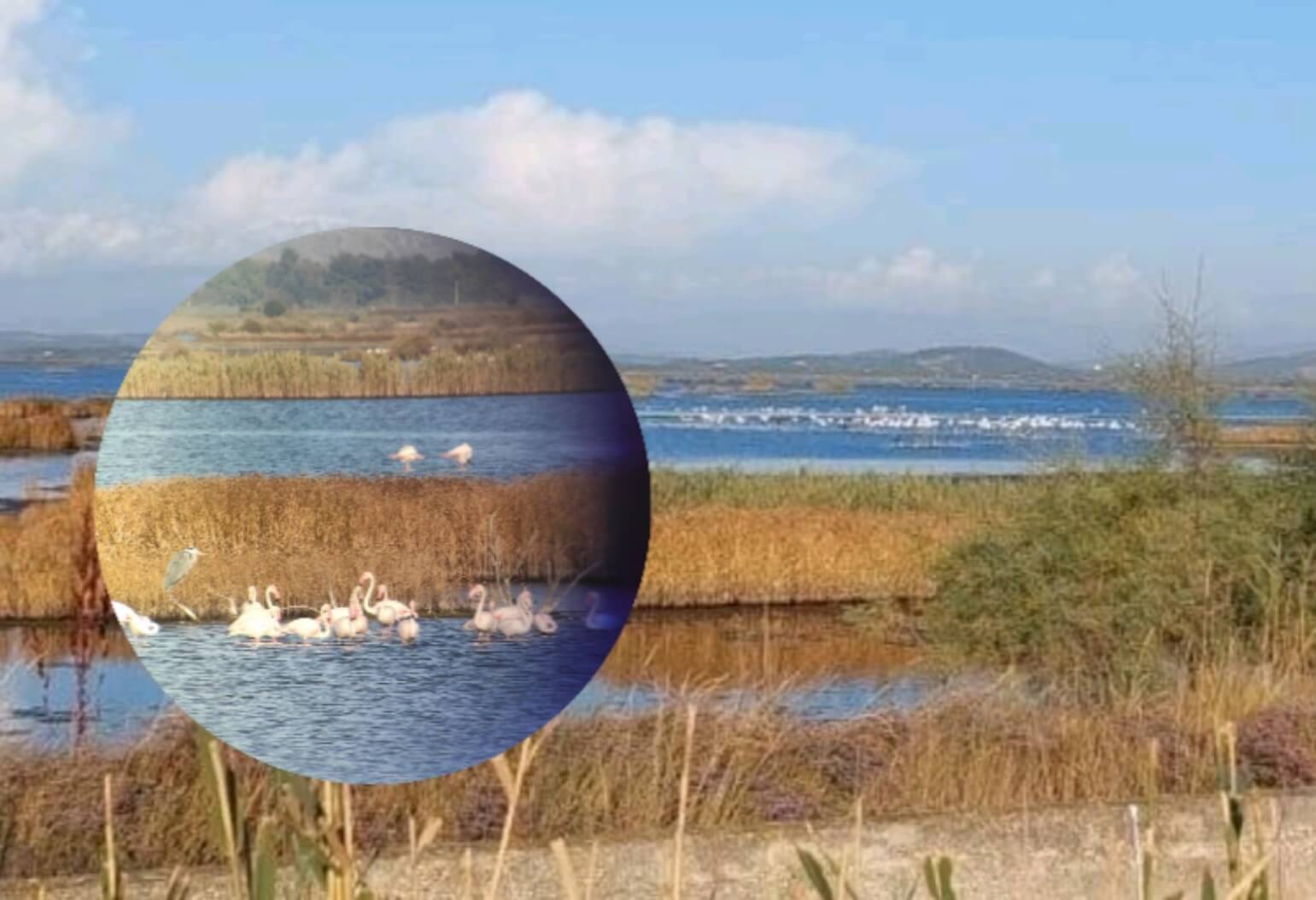
Through the lens, we discover the curiosities of live birds
Ulcinj Salina is the place with the largest number of tropical days in the Balkans, an ideal place to unite with nature and enjoy bird watching, a relaxing walk, or a bike ride…
Experience unrealistically beautiful sunrises and sunsets in Ulcinj’s Salina with the melodies of wildlife calling where man discovers the specifics of bird life on the Flamingos tour organized by AVE tours.
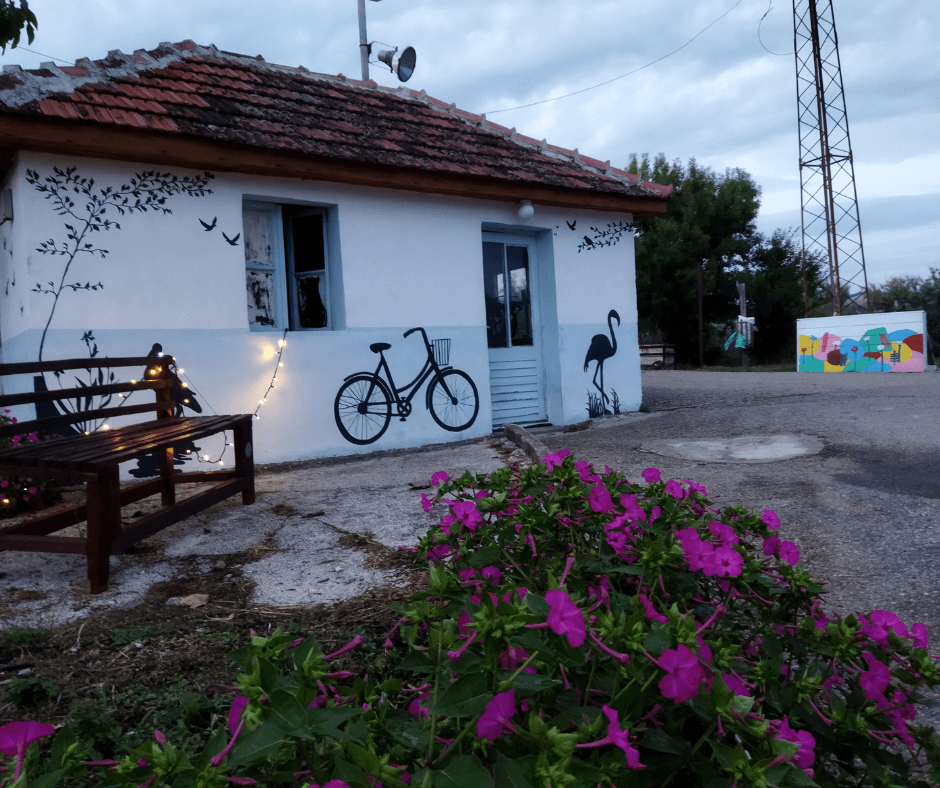
Ulcinj Salina you can also circle by bicycle Foto: Digitella

